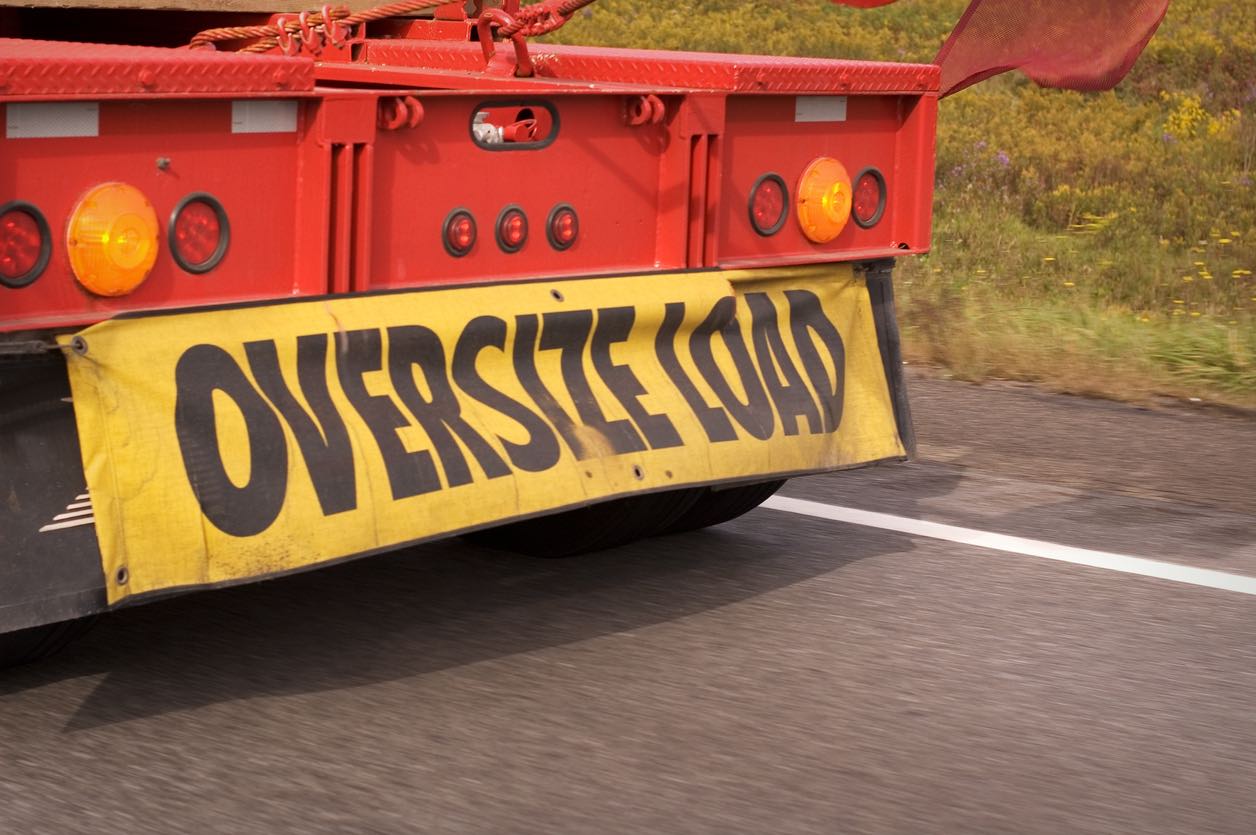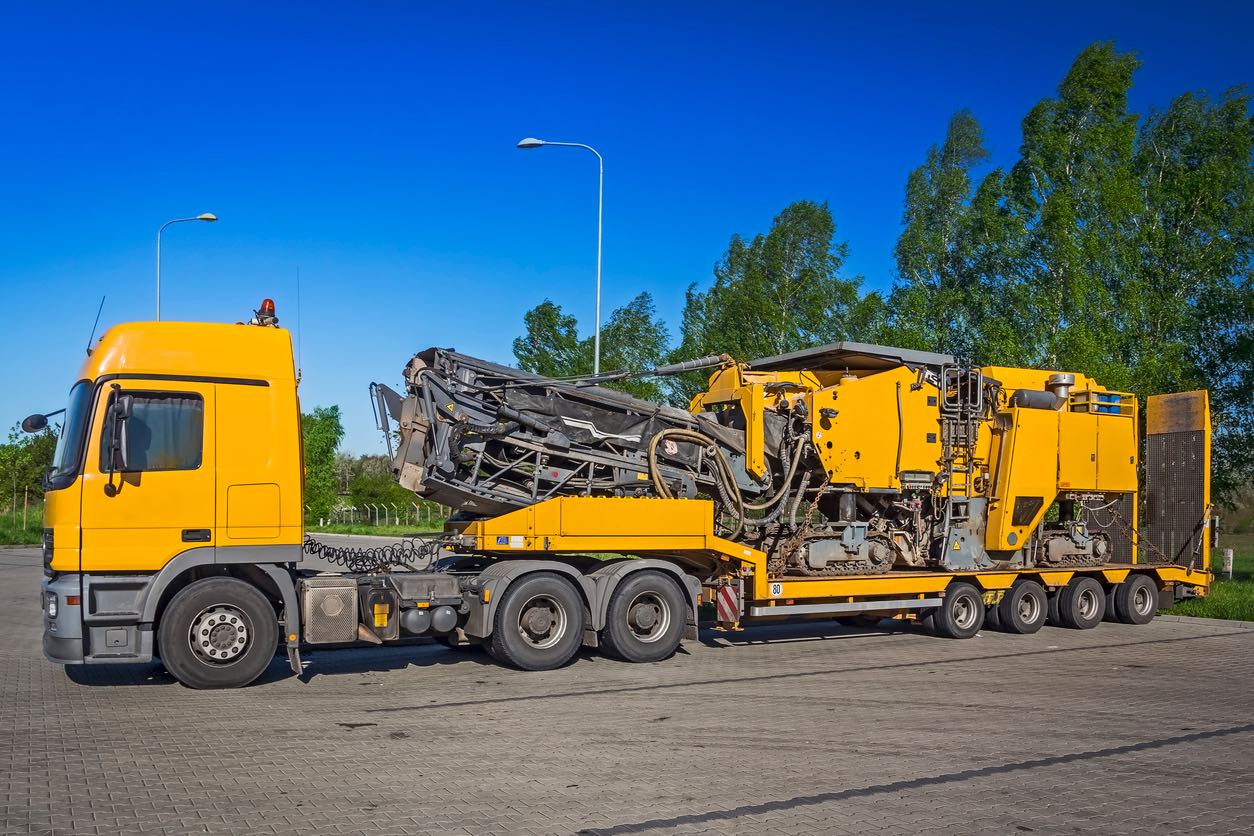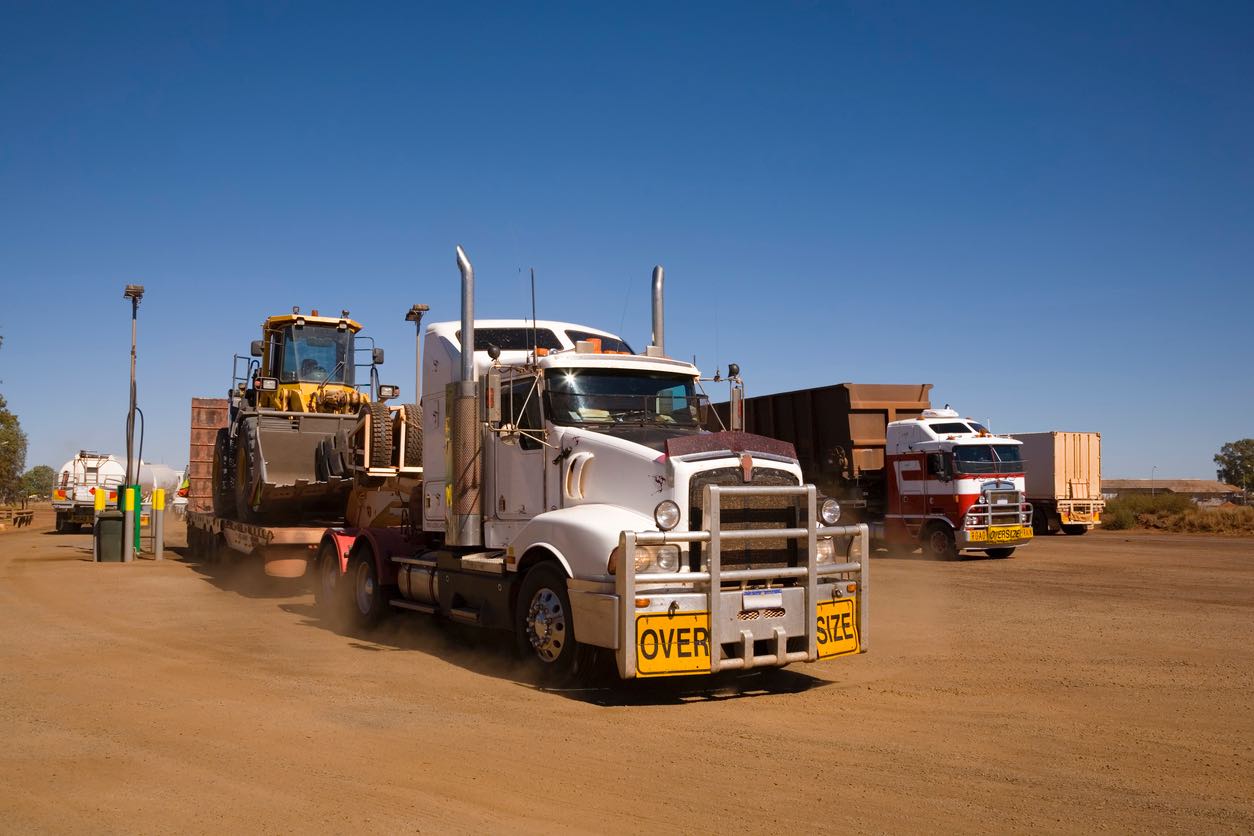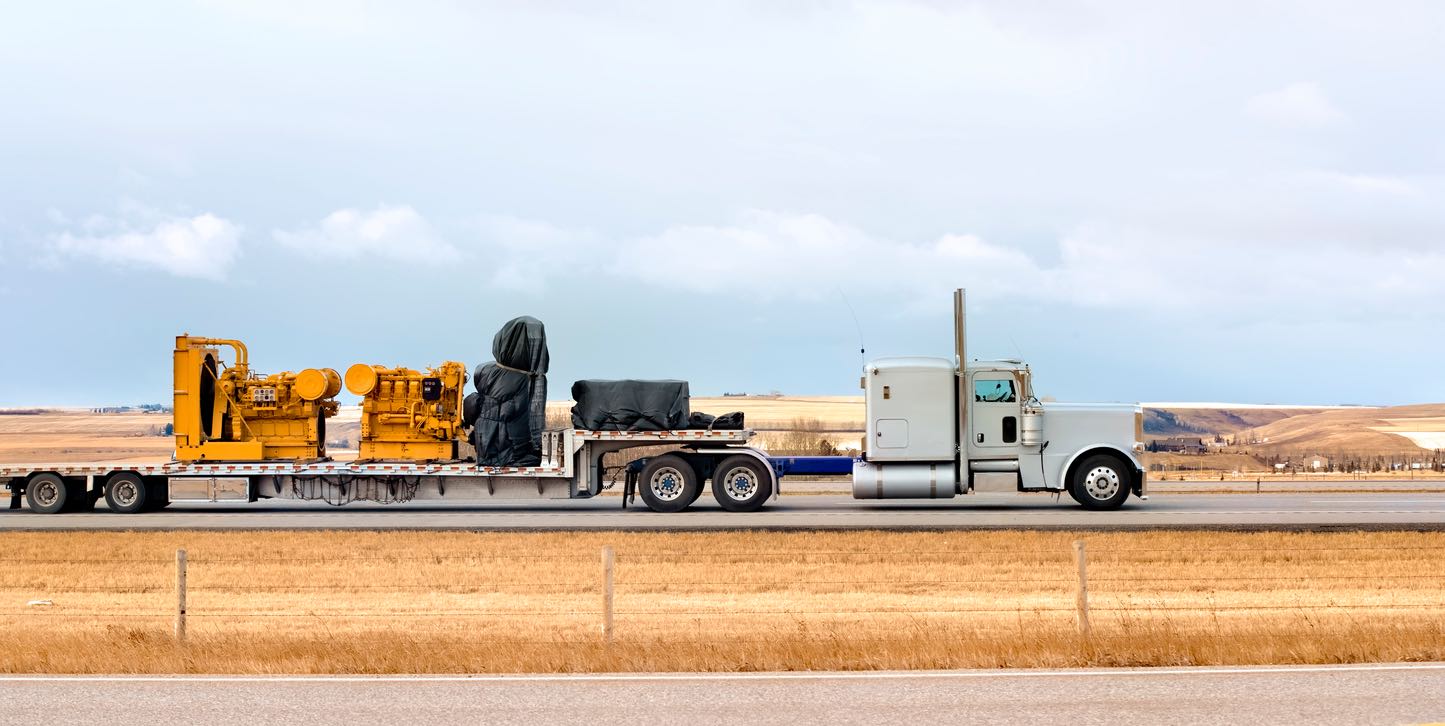Envision maneuvering an enormous, gigantic load through cities, across bridges, and across states. Imagine achieving this without the observant assistance of pilot vehicles. These escort vehicles are an essential component of the convoy and not merely an extra for the safe and effective movement of large loads over American roadways. This article explores the vital function of pilot vehicles and highlights how important they are to the trucking industry. Heavy and oversized loads face several obstacles throughout their trip, from sharp curves in city settings to the unpredictability of country roadways. Pilot cars serve as these enormous vehicles’ navigational beacons, making sure that the road ahead is safe and clear.
Pilot vehicles are responsible for much more than just steering or trailing the heavy shipment. By instantly informing drivers of possible risks, traffic patterns, and logistical difficulties, they act as an early warning system for the drivers. The foundation of this symbiotic partnership between the pilot car drivers and heavy haul drivers is careful preparation, knowledge, and trust. We get a greater understanding of the intricate orchestration needed to carry enormous loads securely from point A to point B as we investigate the subtle dynamics of this collaboration. We hope to raise awareness of the unsung heroes of the road—those whose dedication keeps our roads safe and our economy growing—through this guide.

Pilot cars are essential in the intricate realm of heavy load transportation. Whether leading the convoy or keeping an eye on the rear, these specialized vehicles serve as the watchful eyes and ears for heavy haul drivers, making sure a clear road is kept. Their tactical presence greatly improves safety protocols, protecting not just the truck and its heavy load but also all other nearby road users. Pilot vehicles make the efficient and dependable transportation of large cargoes possible by enabling safe passage and averting potential risks. They can foresee and avoid any impediments thanks to their experience and acute knowledge of road conditions, ensuring the big freight arrives at its destination safely and on time.
The use of pilot cars is not limited to their immediate purpose. In order to handle the logistical challenge on our roadways, they work closely with transportation businesses, law enforcement, and highway authorities, playing a critical part in the larger logistics network. This coordination makes sure that the transportation of each oversized load is organized, safe, and complies with all applicable laws. Using their understanding of local traffic patterns, pilot vehicles frequently lead the way through crowded locations, selecting the best routes to minimize delays and interruptions for both the heavy haul and the regular flow of traffic. Essentially, the job that pilot vehicles do highlights the careful balancing that is needed to drive heavy cargoes on American roadways, underscoring their vital role in the trucking sector and the whole economy.
The following highlights the major functions of pilot cars:
Safety Enhancement: By keeping the heavy haul driver informed of any impending dangers or modifications to the road ahead, pilot vehicles considerably improve the safety of hauling oversized loads. They serve as an early warning system that enables the driver to promptly make the required modifications.
Traffic Management: Pilot vehicles are essential for directing traffic around an oversized load since they can communicate with the heavy haul driver and other drivers on the route. To maintain a smooth traffic flow, this includes easing lane changes, maneuvering through confined locations, and working with authorities.
Regulatory Compliance: Another crucial function of pilot vehicles is to guarantee that the transportation of oversized loads conforms with municipal and state requirements. They play a crucial role in maintaining the convoy within the bounds of the law, preventing fines and delays, and they assist in organizing the route in compliance with approved rules.

It takes not just a particular skill set but also a depth of knowledge spanning the spectrum of logistical planning and legal compliance to navigate the many and sometimes complex state, municipal, and county rules. Just the permission application procedure demonstrates the difficult balancing act between adhering to local regulations and designing routes that are both efficient and lawful. This important component of a pilot car operator’s job is not only administrative; it’s essential to making sure heavy haul freight travels across borders securely and smoothly. The distinct needs of each state present a challenge as well as evidence of the necessity of careful planning and flexibility. The operator needs to be an expert at planning ahead and paying attention to details, from comprehending weight restrictions on certain routes to recognizing when transportation is permitted.
The intricacy of the current work is further highlighted by the fact that different regions have different legislation. For instance, various regions could require certain safety precautions, such as the availability of extra escort cars for particular kinds of loads, while other regions might impose limitations due to environmental concerns or the need to preserve historical sites. For a heavy haul trip to be successful, the operator must be able to anticipate, comprehend, and adjust to these constantly changing needs. This flexibility is developed via experience, ongoing education, and a steadfast dedication to efficiency and safety.
The operational requirements and challenges of pilot vehicles are outlined below:
Permit Acquisition: One of the first steps in the heavy haul transportation procedure is getting the required permissions. To secure these permits, operators must carefully compile and submit comprehensive information on the cargo, suggested routes, and dates, guaranteeing adherence to local, state, and federal laws.
Understanding Local Laws: There are regulations pertaining to large haul transportation that are specific to each jurisdiction. For pilot car operators to properly manage the complexity of cross-country transportation, a thorough awareness of these rules is essential.
Route Planning: Geography, road conditions, and regulatory restrictions must all be thoroughly understood in order to plan the most effective and compliant route. To create the most efficient route for transportation, operators must weigh these considerations.
The operator needs to be skilled at both quick problem-solving and logistical detail management for each of these crucial jobs. For example, obtaining a permit requires more than just filling out paperwork; it also entails comprehending each load’s unique requirements and how they relate to legal regulations. Similarly, implementing one’s understanding of local rules to enhance the efficiency and safety of the transportation process is just as important as memorization of them. Furthermore, route planning involves more than just charting a path; it also entails foreseeing possible obstacles and figuring out how to get past them. This complex web of responsibilities highlights the vital role that pilot car drivers play in the larger scheme of heavy haul transportation, indicating the indispensability of their knowledge.

Strict safety regulations are necessary for the logistical transportation of oversized loads and are essential to preserving the equilibrium between effective transportation and the security of all drivers. The use of pilot cars stands out as the most important safety measure among them. These cars serve as a conspicuous warning to oncoming traffic that a big cargo is moving since they are outfitted with safety flags, lights, and banners. However, their function goes beyond being visible. Pilot vehicles serve as both communicators and navigators, giving heavy haul drivers vital information about impending dangers, traffic jams, and road conditions. Their presence guarantees that the oversized cargo passes through traffic as safely and as little as possible.
A thorough checklist created to reduce hazards and handle the intricate dynamics of moving big cargo is another essential component of heavy haul transportation safety precautions. Among them are:
Safety Flags and Banners: These indicators, which are frequently bright and have vibrant colors, alert other drivers to the presence of an oversized load. This improves visibility both during the day and at night.
Enhanced Lighting: The convoy is visible from a distance thanks to additional lighting on the pilot vehicles and the hauling vehicle, especially in bad weather or low light.
Communication Tools: Pilot vehicles, outfitted with CB radios or other communication equipment, stay in continual touch with the heavy haul driver, informing them of impending obstacles and modifications to traffic patterns.
Every one of these elements is essential to the secure movement of heavy hauls. Safety banners and flags serve as a visual cue to other motorists, encouraging vigilance and attentiveness. Improved illumination not only improves visibility but also acts as a preventative measure against possible crashes, particularly in inclement weather or during nighttime travel. Simultaneously, the significance of proficient communication cannot be emphasized enough. A safe passage for the oversized load and the safety of all drivers on the road is ensured by the capacity of heavy haul drivers and pilot cars to communicate information in real-time, helping to prevent accidents, blockages, and other risks.

A safe heavy load transportation system relies heavily on the truck driver and pilot vehicle having effective communication. The smooth transition between these two responsibilities guarantees that the oversized load arrives at its destination safely and effectively. In order to keep up this essential connection, tools like satellite communication devices, cell phones, and CB radios are required. Real-time information on the state of the roads, traffic jams, and any dangers are made possible by the technology. With the use of these updates, the truck driver is better equipped to navigate the obstacles in front of him by changing his speed and position as needed.
Coordination and communication techniques are equally important. Pilot car drivers get training on how to precisely and quickly analyze and communicate complicated information, ensuring that signals are not only transmitted but also comprehended. One way to reduce the likelihood of misunderstandings is to use a common language or set of codes that both parties are acquainted with. Pre-trip meetings are also frequently used to go over the itinerary, pinpoint any problem areas, and decide on communication procedures. Establishing a shared understanding and ensuring a seamless operating flow during the trip depend on this preliminary stage.
Below is an overview of how the drivers of the oversized load trucks coordinate and communicate with the pilot vehicles:
CB Radios: Instantaneous communication over short distances is made possible by CB radio use, which makes it a useful tool for notifications and feedback regarding traffic and road conditions.
Mobile Phones and Satellite Communication: Mobile phones and satellite communication devices serve as an essential backup for longer distances or in places where CB radio signals might not be able to reach. They guarantee that, even in isolated areas, the truck driver and pilot vehicle stay in communication.
Pre-trip Meetings: Pilot car operators and truck drivers get together before setting out on the trip to plan the best routes, talk about potential difficulties, and decide on certain signals or codes for communication. These discussions are essential for resolving any possible problems and making sure everyone is ready for the trip.
Pilot car operators and truck drivers collaborate well by using cutting-edge communication equipment and adhering to standard communication procedures. In order to safely navigate the difficulties of heavy haul transportation and ensure the safety of the load, the transport crew, and other road users, this relationship is essential.

A pilot vehicle plays a crucial function in the convoy since the exact requirements of the cargo and the complexities of the route planned dictate where it should be positioned: ahead of or behind the heavy haul load. A pilot car, which leads the way, serves as the truck’s first line of defense, scouting ahead for potential dangers, problems with clearance, or traffic patterns that could need alterations to the truck’s route. On the other hand, when the pilot car is in the back, it serves as a guardian, making sure that other vehicles are aware of the heavy load’s presence and keeping a safe distance, which helps to avoid potential collisions or traffic jams.
A range of instruments and equipment are installed in each pilot car to improve communication and safety when transporting large loads. This equipment consists of, but is not restricted to, flashing lights, high-visibility flags, and signs that makes it obvious that a large cargo is there. These are not only extras; they are essential parts that help ensure the safety of large loads, especially while traveling through congested regions or challenging traffic conditions. In order to be in continual touch with the truck driver and ensure that any imminent risks are reported and navigated swiftly, the pilot vehicles also carry CB radios or other communication equipment.
An outline of the equipment and positioning of the pilot car is shown below:
High-Visibility Flags: These flags, which are usually placed on the front and back of the pilot car and are vivid orange or red in color, notify other drivers to the unusual road condition instantly. They aid in the smooth integration of the large cargo into the traffic flow by indicating the need for more caution and awareness.
Flashing Lights: Flashing lights are an absolute necessity, particularly in poor visibility situations like dawn, dusk, or bad weather. They draw other drivers’ attention from a distance, giving them plenty of time to respond and enhancing road safety overall.
Signage: In order to alert other drivers about the type of load being transported, signage is essential. It is typical to see “Oversized Load” flags, which must be visible on the hauling truck as well as the escort car. This increases everyone’s safety by making sure the warning is visible from all directions.
Communication Devices: These electronic devices are crucial for the continuous information exchange between the heavy haul driver and the pilot vehicle, enabling prompt resolution of any impending problems. It is impossible to overestimate the importance of having clear and concise communication skills while coordinating maneuvers in confined locations, navigating around unforeseen road closures, or communicating about abrupt traffic jams.
Transporting large loads across a variety of terrain requires careful planning in the application of these instruments as well as expert pilot car placement. They greatly reduce the dangers involved in transporting such heavy loads in addition to guaranteeing adherence to transportation regulations.

In the complex world of heavy haul transportation, pilot vehicles are the unsung heroes who perform a duty that goes beyond traditional escort responsibilities. These trucks and their drivers do much more than only lead or follow big cargoes; they also shoulder a wide range of duties that together guarantee the security and efficient operation of transportation services on the country’s roadways. Pilot car operators ensure that these enormous shipments arrive at their destinations safely by skillfully negotiating the intricate web of restrictions and liaising with heavy haul drivers. The important value that pilot vehicles contribute to the trucking sector is highlighted by this crucial coordination of logistics, safety, and regulatory compliance, which guarantees that our highways stay safe for all users.
Selecting Ship A Car, Inc. is choosing unrivaled experience in the heavy haul and freight transportation sectors. SAC sets itself apart as the top option for people that appreciate dependability, effectiveness, and top-notch service. Ship A Car, Inc. is committed to exceeding your transportation expectations and has a strong track record of customer satisfaction, as demonstrated by several five-star evaluations and an exceptional A+ rating from the Better Business Bureau (BBB). Their team of committed heavy haul specialists uses their wealth of knowledge and expertise to make sure that your cargo is handled with the utmost care and professionalism. Call (866) 452-3657 to speak with an expert who is prepared to make sure your next shipment is transported smoothly, demonstrating why Ship A Car is known as the industry leader.
Q: What makes pilot cars essential in heavy haul transportation?
A: For the safe and effective transportation of heavy and oversized loads, pilot vehicles are necessary. They direct large-haul truck drivers, control traffic, and work with law enforcement to get around barriers and laws.
Q: How does one become a pilot car operator?
A: A thorough awareness of state-specific transportation legislation, specialized training, and the equipment required to assure safety are all prerequisites for becoming a pilot car operator. Additionally, certain states require certification.
Q: Why should I choose Ship A Car, Inc. for my heavy haul needs?
A: With an A+ Better Business Bureau rating and excellent ratings, Ship A Car, Inc. provides unparalleled knowledge in the freight and heavy haul sectors. Our staff is committed to meeting your heavy haul requirements with dependable, safe, and effective transportation options. Click here to learn about the SAC advantage.




